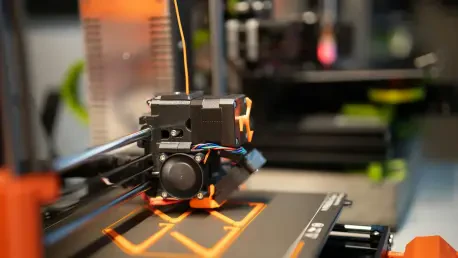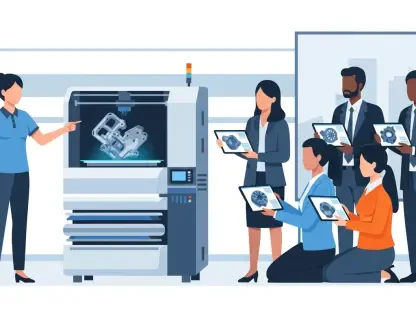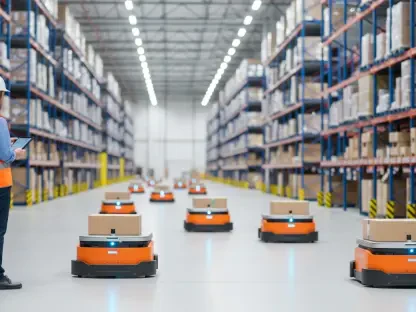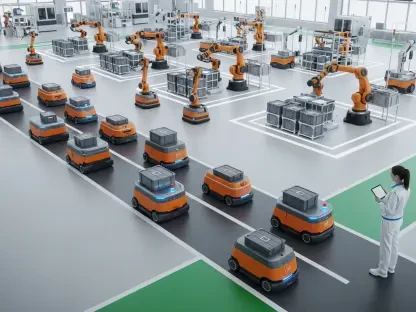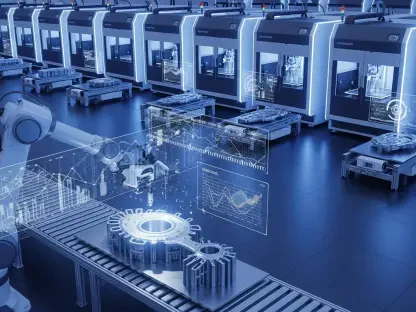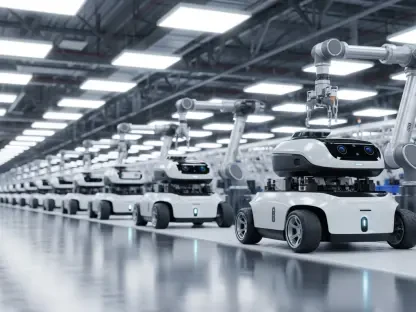Introduction to Additive Manufacturing Trends
In a world where customization and speed are paramount, consider that the global additive manufacturing (AM) market is projected to surpass $76 billion by 2030, reflecting an unprecedented surge in adoption across industries. This transformative technology, often referred to as 3D printing, is revolutionizing how products are designed and produced, from intricate aerospace components to life-saving medical implants. AM stands as a cornerstone of modern innovation, enabling unparalleled flexibility and efficiency. This analysis delves into the current state of AM, highlights pivotal events such as the 2026 AMUG Conference, explores expert insights, and speculates on future trajectories, culminating in a comprehensive overview of this dynamic field.
Current Landscape of Additive Manufacturing
Market Growth and Industry Adoption
Recent industry reports indicate that the AM sector is experiencing a compound annual growth rate of over 20% from 2025 onward, with significant traction in regions like North America and Europe. Market analyses from reputable sources project that by 2027, adoption in sectors such as automotive and healthcare will account for nearly half of the market share, driven by the need for rapid prototyping and customized solutions. This growth underscores how integral AM has become to manufacturing ecosystems, offering a glimpse into a future where traditional production methods may take a backseat.
The data also reveals a notable shift in investment, with substantial funding directed toward research and development to enhance AM capabilities. Emerging economies are beginning to adopt these technologies at an accelerated pace, recognizing the potential for cost reduction and supply chain optimization. Such trends highlight a global movement toward integrating AM as a standard practice rather than a niche innovation.
Practical Applications and Success Stories
Across various sectors, AM is making tangible impacts, exemplified by its use in producing lightweight aircraft parts that significantly reduce fuel consumption. A standout case is the development of patient-specific prosthetics in healthcare, where AM enables precise fits that improve comfort and functionality. These real-world applications demonstrate the technology’s capacity to address complex challenges with tailored solutions.
Events like the annual AMUG Conference play a crucial role in spotlighting such innovations through platforms like the Start-up Launchpad at the AMUGexpo. This initiative provides a stage for emerging companies to present cutting-edge AM applications, fostering dialogue between innovators and industry leaders. The visibility gained at these gatherings often translates into partnerships that propel practical implementations forward.
Spotlight on the 2026 AMUG Conference
Advancements in Education and Practical Training
Scheduled for March 15-19 in Reno, Nevada, the 2026 AMUG Conference emerges as a pivotal event for AM professionals seeking to deepen their expertise. The conference emphasizes educational growth through features like Training Labs, sponsored by industry partners, which offer detailed, hands-on sessions to explore AM technologies in depth. These labs aim to provide a practical understanding that goes beyond theoretical knowledge.
Immersive workshops, running throughout the week, further enhance the learning experience by encouraging active participation. AMUG President Shannon VanDeren emphasizes that such interactive formats are vital for sparking creativity and honing critical thinking skills among attendees. With an expanded agenda featuring fourteen topical session tracks, the event ensures comprehensive coverage of diverse AM interests.
Fostering Connections and Community Engagement
Networking remains a cornerstone of the AMUG Conference, beginning with the New Member Welcome, an event designed to integrate first-time participants into the community. Claire Belson Barnes, Director of Membership, notes that this initiative offers invaluable tips for navigating the conference while facilitating connections with seasoned professionals. Such interactions lay the groundwork for meaningful collaborations.
The conference culminates in the traditional Family Dinner, a gathering that reinforces the sense of camaraderie among attendees. Additionally, signature events like the Innovators Showcase and the Innovators Award celebrate groundbreaking contributions to AM, inspiring participants by sharing stories of success and perseverance. These moments of recognition and connection are instrumental in building a cohesive industry network.
Expert Insights on AM Evolution
Industry leaders, including AMUG representatives, view events like the 2026 conference as critical catalysts for AM advancement. Their perspectives highlight how educational initiatives and networking opportunities elevate user proficiency and set higher industry benchmarks. Experts agree that such platforms are essential for disseminating best practices and fostering innovation in a competitive landscape.
Challenges, however, persist, particularly in scaling AM for mass production while maintaining quality and consistency. Addressing these hurdles requires a concerted effort to enhance training programs, a focus that the AMUG Conference prioritizes through its hands-on learning modules. Insights from thought leaders suggest that overcoming these obstacles will hinge on continuous skill development and knowledge sharing.
A broader concern lies in aligning AM advancements with regulatory frameworks to ensure safety and compliance. Experts advocate for collaborative efforts between industry stakeholders and policymakers, facilitated by conferences, to navigate these complexities. This dialogue is seen as a pathway to unlocking AM’s full potential across diverse applications.
Future Prospects of Additive Manufacturing
Looking ahead, AM is poised for remarkable evolution, with anticipated breakthroughs in materials science potentially introducing stronger, more versatile printing substrates over the next decade. Innovations in printing speeds could further streamline production processes, making AM viable for larger-scale operations. These advancements promise to expand the technology’s footprint in industries ranging from construction to consumer goods.
The benefits of AM, such as cost efficiency and the ability to create highly customized products, are counterbalanced by challenges like regulatory barriers and a shortage of skilled professionals. The AMUG Conference’s emphasis on training serves as a model for addressing skill gaps, equipping users with the tools needed to adapt to evolving demands. Tackling these issues will be crucial for sustaining growth and ensuring widespread adoption.
Speculation on AM’s impact reveals optimistic scenarios, such as its role in promoting sustainable manufacturing by minimizing waste. However, caution is warranted regarding intellectual property risks as designs become easier to replicate. Balancing these dynamics will shape how AM redefines industrial paradigms, with education and community engagement playing pivotal roles in navigating this future.
Conclusion: Reflecting on AM’s Trajectory
Looking back, the exploration of additive manufacturing unveiled a landscape brimming with growth, driven by robust market expansion and practical applications that transformed industries. The 2026 AMUG Conference stood out as a beacon of progress, uniting professionals through education and networking to push boundaries. Moving forward, stakeholders should prioritize participation in such events to stay abreast of innovations, while industries must invest in training to bridge skill gaps and advocate for clear regulatory guidelines to support AM’s integration, ensuring its potential is fully realized in a rapidly changing world.
